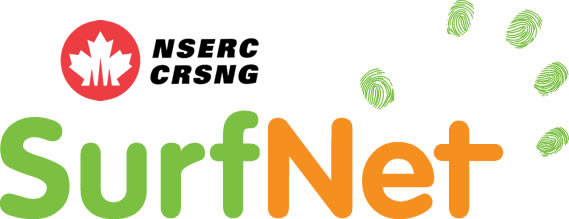Humanizing the Digital Interface

- Sheelagh Carpendale, University of Calgary
- Stacey Scott, University of Waterloo
Digital surfaces enable new ways of interacting with and sharing information and media. This research theme is focused on determining how interfaces and interaction techniques can best take advantage of the potential offered by surface computing. Research in this area aims to articulate the interaction foundational elements of surfaces, investigate new interaction techniques that exploit these foundations, and analyze the opportunities and constraints of each application domain and its associated real environment. The ultimate goal is to apply our findings to generate surface interfaces that fit seamlessly with work and social practices.
This is an extremely active research theme across the network. There are 51 ongoing and 5 completed projects focused on addressing the interface and interaction challenges introduced by the new form factors and input technologies offered by surface computing platforms. These projects range from laboratory-based investigations of novel interaction methods, for example to assist users to accurately interact with surface-based content from a distance, similar to Wii-style interactions (e.g., the Targeting Assistance for Distant Pointing project) to field studies of real-world environments, such as a mobile command centre, to first derive interface and interaction requirements for installing interactive surfaces in those environments and later to evaluate the effectiveness of those installed surfaces (e.g., the MACCH: A Multi-Agency Collaboration and Coordination Hub project).

Projects encapsulate four main focus areas. Some projects aim at understanding the fit between surfaces, humans, and human activity (Focus Area 1.1). For example, the Proxemity-Based Media Player for a Surface project is exploring the use of spatial relationships, or proxemics, which we implicitly use in our everyday interactions with other people, to provide more intuitive interactions with digital media on large surfaces, e.g. a large-screen TV in the home. Other projects focus on designing interactions for usage contexts involving a single surface only, e.g. an interactive table, or a smartphone (Focus Area 1.2). For example, the Investigating the Design of Digital Tabletop Board Games project is examining the impact of different levels of automation in digital tabletop interface conversions of conventional board games, such as Checkers and Pandemic, on player engagement, enjoyment, and socialization.
Some projects focus on designing interactions for usage contexts involving multiple surfaces being used in concert, for example the use of a smartphone to drive interactions with a digital wall (Focus Area 1.3). For example, the Ubiquitous Cursor: Direct Cursor Feedback for Multi-Display Environments project is developing new interface techniques for targeting (or selecting) items when working across multiple, connected displays. Finally, other projects study the adaptation of interface concepts developed in the laboratory settings to real-world settings (Focus Area 1.4). For example, the TableNOC: Monitoring and controlling telephony networks using multitouch tables/displays project focuses on developing a software application for a digital tabletop system for a real-world IP telephone network operating centre.
Additional information related to Theme 1 related projects and results from past and ongoing projects can be obtained under the Projects page and the Papers, Presentations, and Videos pages of the website.



